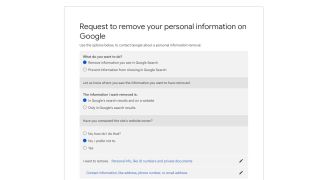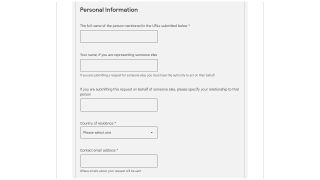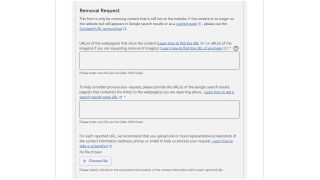
With the internet in a constant state of evolution, people with less-than-savory intentions will, unfortunately, always be looking for ways to compromise you by tracking down your most sensitive information. Finally, though, Google is taking greater strides in protecting internet users from having their data fall into the wrong hands.
Google has officially announced that it's expanding its personally identifiable info (PII) removal policies, with users now able to request the removal of sensitive information including email addresses, phone numbers, and home addresses should they spot them in Google Search results.
While it's arguable that Google should have had these basic protections implemented long ago, it's certainly a case of "better late than never," and should help protect the sensitive info of people who need it most, such as those who work on the web in a professional capacity, as well as those requiring protection from doxxing and / or stalking.
Read on, then, to learn how to request Google directly for the removal of personally identifiable information like email addresses, bank account details, phone numbers, and much more.
What personally identifiable info can I request the removal of?
A helpful page on the Google Help Center portal details everything the company deems as sensitive information. For your request to be considered, then, the information you find of yourself through Google Search results must fall under one or more of the following categories:
- Confidential government identification (ID) numbers like U.S. Social Security Number, Argentine Single Tax Identification Number, Brazil Cadastro de pessoas Físicas, Korea Resident Registration Number, China Resident Identity Card, etc.
- Bank account numbers
- Credit card numbers
- Images of handwritten signatures
- Images of ID docs
- Highly personal, restricted, and official records, like medical records
- Personal contact info (physical addresses, phone numbers, and email addresses)
- Confidential login credentials
Google also details the requirements that must be met in order to remove 'doxxing' content from Search results. Doxxing is the act of a third party revealing your personally identifiable information in a public capacity, such as on social media or via forums or email chains.
To request the removal of doxxing content, the Search result must contain the following:
Get daily insight, inspiration and deals in your inbox
Sign up for breaking news, reviews, opinion, top tech deals, and more.
- Personal contact information such as an address or phone number
- Explicit or implicit threats to you personally, or calls to action to harm or harass your person
How to request removal of personal information from Google Search results
To request the removal of your personal information from Google Search results, you'll need to fill out this form on the Google Help Center portal. This form can also be accessed via the Help Center page linked above.

As shown in the above image, the form you'll need to fill out is quite simple. Simply choose the options that best represent your query. Further down, you'll also need to specify whether or not the personal information is being exploited with the intent of doxxing, and whether or not the content is currently live.
Under the 'Personal information' section, you'll need to enter the name of the person mentioned in the offending content, your country of residence, and an email address which Google will use to contact you in response to the removal request.

Lastly, under 'Removal Request', include the URLs that are showing the content you wish to remove, as well as the URL(s) of the Google Search results that are displaying your personal information. You can optionally attach screenshots of the content in question, too, which we recommend doing to give you the best chance of Google following through with your request.

What happens next?
Upon submitting your request for approval, you'll receive an automated email confirmation from Google, simply stating that your request has been received. Google will then look into your removal request based on the information you provided in the request form.
It's possible that Google will reach out to you again via email, requesting further information to help your request along. But this will only happen in the event that crucial information was missing from the form, such as missing URLs.
If there are no further issues on Google's end, it'll send you a message detailing the action it's taken in regards to your request. If Google finds that the URLs you included in the form fall under its removal policy, then it'll remove them from Google Search results.
One last thing to keep in mind is that while Google can remove sensitive personal information from search results, in most cases, it won't scrub them from the websites themselves. In this case, you may want to contact the website's host or support center directly.

Rhys is TRG's Hardware Editor, and has been part of the TechRadar team for more than two years. Particularly passionate about high-quality third-party controllers and headsets, as well as the latest and greatest in fight sticks and VR, Rhys strives to provide easy-to-read, informative coverage on gaming hardware of all kinds. As for the games themselves, Rhys is especially keen on fighting and racing games, as well as soulslikes and RPGs.
Most Popular







